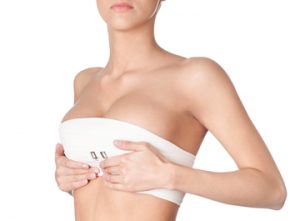 Breast augmentation is a sought-after procedure for women looking to enhance their body contours. For petite women, achieving a natural and balanced look requires careful consideration of several factors, including implant size, type, and placement. It’s important to select options that complement a smaller frame without appearing disproportionate.
Breast augmentation is a sought-after procedure for women looking to enhance their body contours. For petite women, achieving a natural and balanced look requires careful consideration of several factors, including implant size, type, and placement. It’s important to select options that complement a smaller frame without appearing disproportionate.
Petite women often face unique challenges in breast augmentation, as their smaller body dimensions can make the results of larger implants look exaggerated. Therefore, smaller implant sizes are usually recommended to maintain a harmonious appearance. In addition, the type of implant—whether silicone or saline—can significantly impact the overall feel and look of the augmentation. Silicone implants are often preferred for their natural texture, while saline implants offer the benefit of adjustability post-insertion.
The shape and profile of the implant also play a critical role. Round implants can provide more fullness, while teardrop-shaped implants offer a more natural slope, which may be more suitable for petite women. Choosing the right profile ensures that the augmentation enhances the chest without adding unnecessary width.
Placement techniques are another crucial consideration. Under-the-muscle placement often provides a more natural contour, which is particularly beneficial for women with less natural breast tissue. This method also tends to produce better mammogram readings and reduces the likelihood of visible implant edges. Conversely, over-the-muscle placement may result in a quicker recovery but carries a higher risk of visible rippling.
Each of these factors contributes to the overall outcome of the breast augmentation, making it essential for petite women to have a thorough consultation with a qualified plastic surgeon. By understanding these considerations, petite women can make informed decisions that align with their aesthetic goals. Board-certified plastic surgeon Dr. Bryson Richards provides breast augmentation to patients in Las Vegas, NV, and surrounding locations.
Ideal Implant Sizes for Petite Frames
Selecting the appropriate implant size is especially crucial for those with smaller frames. Petite women often benefit from choosing implants that enhance their natural silhouette without creating an exaggerated appearance. Implant sizes typically range from 150cc to 300cc for petite individuals. This range is often sufficient to achieve a noticeable enhancement while maintaining a balanced look.
The right implant size will vary based on individual body measurements and personal goals. For instance, a petite woman with a narrower chest might opt for a smaller implant to achieve a harmonious appearance. Conversely, someone with a slightly broader frame may feel comfortable selecting a larger size within the recommended range.
Your plastic surgeon will likely take precise measurements of your chest width, breast height, and tissue characteristics to help determine the most suitable size for your frame. They may also use imaging software or physical sizers during the consultation to give you a visual sense of different implant sizes and how they would look on your body.
It’s essential to consider not just the volume but also the profile of the implant. Higher-profile implants can provide more projection without adding extra width, which can be a significant advantage for petite women aiming for a fuller look without compromising their natural proportions.
Additionally, some patients find that their aesthetic goals can be met with less volume than initially anticipated, especially when the implants are designed to complement their specific body type. Ensuring the chosen size aligns with both aesthetic desires and body dynamics can make a significant difference in achieving satisfying results.
Types of Implants Suitable for Petite Women
Selecting the right type of implant involves considering both silicone and saline options, each offering distinct advantages. Silicone implants are often favored for their natural feel and reduced risk of rippling. These implants tend to mimic the texture of natural breast tissue, making them a popular choice for achieving a seamless, natural look. Saline implants, on the other hand, are filled after insertion, which allows for a smaller incision and easy adjustability. While saline implants may feel slightly firmer, they offer flexibility in size adjustments, which can be particularly beneficial for fine-tuning the desired outcome.
When it comes to implant shape and profile, round and teardrop-shaped implants provide different aesthetic results. Round implants are known for adding more fullness, especially in the upper part of the breast, creating a more lifted appearance. Teardrop-shaped implants, also known as anatomical or contoured implants, are designed to mimic the natural slope of the breast, offering a subtler enhancement that may be better suited for those aiming for a more natural look.
Profile options such as moderate or high profile implants can significantly impact the final appearance. Higher profile implants project more from the chest without increasing the width, which can be particularly advantageous for maintaining proportion in petite women. Selecting the appropriate shape and profile ensures that the implants enhance the chest area without overwhelming the natural frame.
Understanding these distinctions can help in making an informed choice that aligns with personal preferences and body dynamics. Discussing these options with a qualified plastic surgeon will provide tailored recommendations suited to individual goals and physical characteristics.
Placement Techniques for Optimal Results
Placement techniques significantly influence the results of breast augmentation. Under-the-muscle (submuscular) placement is frequently recommended for petite women, as it tends to create a more natural contour and minimizes the visibility of the implants. This approach positions the implant beneath the chest muscles, offering additional coverage and reducing the chances of rippling. It is also associated with better mammogram readings, which is an important consideration for ongoing breast health.
While the under-the-muscle technique may involve a longer recovery period, many find the natural-looking results to be worth the extra downtime. Over-the-muscle (subglandular) placement, on the other hand, positions the implant above the chest muscles, directly behind the breast tissue. This method can lead to a quicker recovery and might be less invasive, but it comes with a higher risk of visible rippling, especially in individuals with minimal natural breast tissue.
The choice of placement technique can also affect the final aesthetics of the breast augmentation. Submuscular placement generally provides a more subtle transition between the chest wall and the implant, which can be particularly advantageous for petite women seeking a balanced and proportional enhancement. However, subglandular placement might be preferred by those looking for a more pronounced result or those who prioritize a shorter recovery time.
Ultimately, the decision between under-the-muscle and over-the-muscle placement should be made in consultation with a qualified plastic surgeon, taking into account individual anatomy, aesthetic goals, and lifestyle considerations. Each method has its own set of benefits and potential drawbacks, making personalized professional advice essential for optimal outcomes.
Recovery Considerations for Petite Patients
Recovery from breast augmentation can be different for everyone, but petite patients often have unique experiences due to their smaller frames. These individuals may notice more pronounced swelling and discomfort during the initial recovery period. Adhering closely to postoperative care instructions is essential to ensure proper healing and optimal results.
Rest is a critical component of recovery. Ensuring that you have a comfortable, quiet space to recuperate can make a significant difference in your overall experience. Hydration and a nutritious diet will also support the healing process and help reduce swelling.
Avoiding strenuous activities is crucial in the weeks following surgery. This includes heavy lifting, high-impact exercises, and even certain household chores that could strain the chest muscles or the surgical area. Light walking can aid circulation and reduce the risk of complications, but always follow your surgeon’s specific guidelines.
Pain management is another key aspect of recovery. Your surgeon will likely prescribe medications to help manage discomfort in the first few days. Over-the-counter pain relievers can also be effective once the initial pain subsides. Applying cold compresses can help reduce swelling and provide some relief, but be sure to follow your surgeon’s advice on their use.
Wearing a supportive surgical bra as recommended can help maintain the position of the implants and reduce swelling. It’s important to attend all follow-up appointments with your surgeon to monitor your progress and address any concerns that may arise.
Understanding that full results can take several months to materialize will help set realistic expectations. Patience and adherence to your surgeon’s instructions are key to a smooth recovery and satisfying results.
Consultation Tips for Petite Women Considering Augmentation
Researching potential plastic surgeons is crucial. Look for those who have a strong track record with petite patients. During your consultation, articulate your aesthetic goals clearly. Bring photos of desired results to provide visual examples. Ask about the recommended implant size and type tailored for your smaller frame, and discuss the pros and cons of different placement techniques. Inquire about the expected recovery timeline and any specific postoperative care tips that may apply to you. Don’t hesitate to ask for before-and-after photos of previous patients with similar body types. This will give you a realistic idea of potential outcomes.
Contact Las Vegas Board Certified Plastic Surgeon Dr. Richards to Schedule a Consultation
If you would like more information on cosmetic surgery procedures and treatments performed by Las Vegas, Nevada plastic surgeon, Dr. Bryson Richards please contact us at 702.870.7070
Taking new patients from Las Vegas, Bullhead City, Laughlin, Pahrump, Mesquite NV and surrounding areas.

